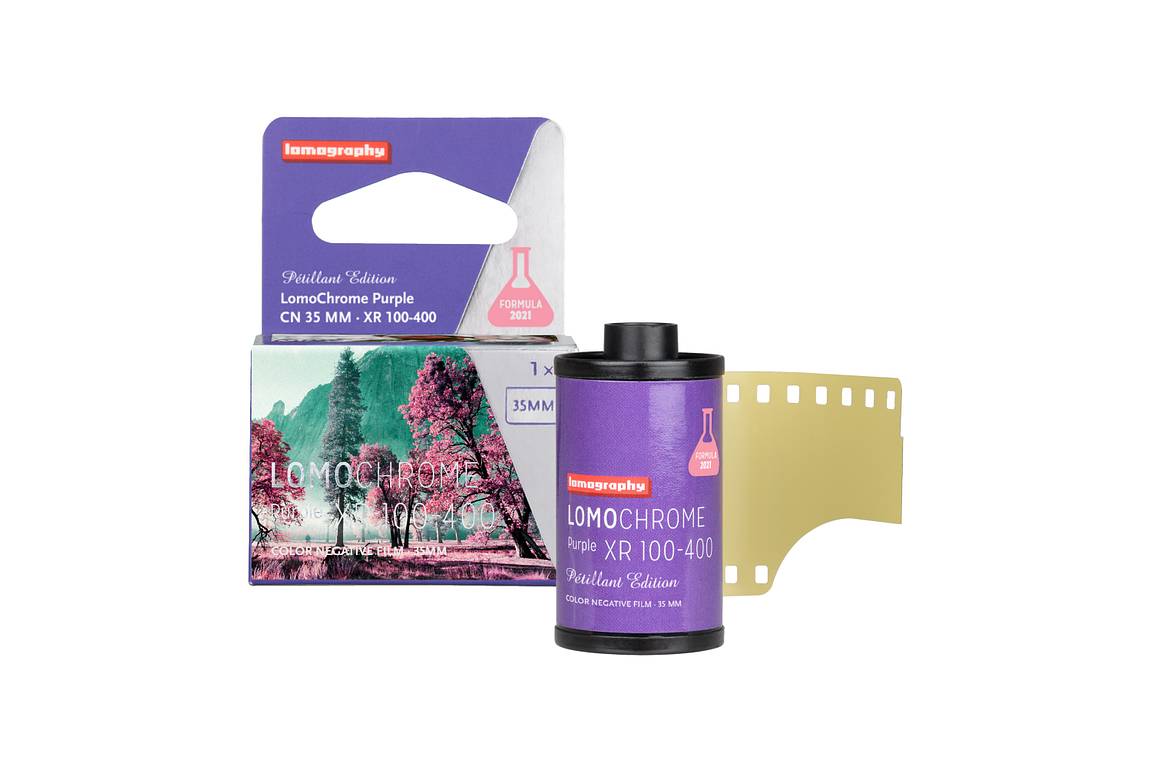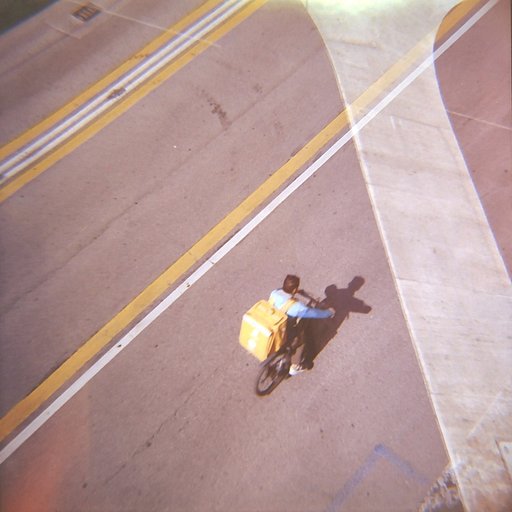Emiliano Rodriguez: A World Seen in Purple
3 Share TweetSan Francisco based photographer, Emiliano Rodriguez has an eye of a classic photographer. Bridging off of influences such as William Eggleston, Emiliano's street photography seems like it's a love letter to San Francisco. Detailing his origins into photography as well as what he enjoys about the LomoChrome Purple Film.

Hi Emiliano, welcome to the magazine, can you tell us a little bit about yourself?
Hello and thank you! I’m 24 and a multidisciplinary artist living in the San Francisco Bay Area, specifically in the East Bay. Professionally, I’m a musician, audio engineer, and video editor. Semi-professionally, I’m a photographer, using film exclusively. I grew up in a very musical environment, mostly with traditional Mexican music. These days I spend most of my time with street photography, but I also do landscapes and album artwork from time to time.
How'd you get introduced to photography?
When I was about 10 years old, my grandfather gave me a camera for Christmas. It was a Canon Powershot A95, one with a really cool articulating screen, and I just went nuts with it. At that time, the family band would tour across the country, and I decided that I would be the “official band photographer.” So during sound checks I would run around auditoriums with the camera and a cheap tripod and set up what I thought at the time were some pretty fantastic performance shots. Spoiler alert: they were not fantastic. Photography weaned as I got older, but I rediscovered it in the form of film in 2015 after a rough breakup and the resulting reevaluation of literally everything. I wanted to find something I could learn to be good at and support 100% on my own. Music was always there in my life, and it hadn’t felt like a real challenge in a while, so photography was the perfect direction, especially with the added elements of film and home processing.

You work a lot in street photography, how'd you get into photographing that subject?
I started shooting in San Francisco after a while for a couple of reasons. At the time, my girlfriend lived in the city, 10 minutes from Union Square, so for a while I practically lived in the heart of the city. I got to know the streets and the people and acclimate to the environment in a really organic way. On another level, I feel like it’s a bit of a responsibility to myself and to other locals to shoot in San Francisco. I was born and raised for the first few months of my life in the city, before my family moved out into the suburban East Bay, but something about how the city has changed over the years got me thinking. There are so many people moving in and out of the city, so much influx of out-of-staters for the tech jobs, so much exodus of working class families, so much energy, both respectful and disrespectful, all falling on this city, and I feel that it is my responsibility to be the local that I never really was and to shoot these streets.
To retake San Francisco as my birthplace and original hometown while paying it back with dedicating time and energy and passion into photographing it. It may not be making a massive difference to most people, but it’s one more person pouring good energy into a place, as I try to do in Berkeley, Oakland, and surrounding smaller cities as well.

Your work has a very old school 70's look to it, who or what are your influences?
I hear that a lot and I have to say that it’s not intentional! But it’s true. Part of it is that I tend to leave modern features out of the frame when I can. I just don’t like the look of these new egg-shaped cars, or digital signage, for example. And looking around, there really is a lot of stuff that hasn’t changed for years in many of the cities in the Bay Area. It’s just a matter of framing, literally and figuratively, in a way that takes the current year out of mind. William Eggleston is my classic photographer of choice. I love the way he exhibited the plainness of life in such an honest way. I take a lot of my intention from that. Everybody these days is looking for great light, or the most stunning locations, or the most beautiful people to make their art shine. I can appreciate all of that, but there is an appreciation to be had for the plain and ordinary. Unless you live in splendor and glory, the plain and ordinary is probably just regular life. Framing regular life in a way that makes it break out of the 4th wall of mundanity is a skill that I hope to master someday. Otherwise, many of my influences are my contemporaries. The work that I see people creating right at this moment is what drives me the most. To gain insight into what other places are like, or how other photographers see cities I shoot in, or work that just completely throws me for a loop, all while being produced at this moment in time when we are all experiencing the same world events and societal trends, is really powerful.

What did you enjoy about working with the LomoChrome Purple?
I loved the guessing game. For my first time using it, I didn’t really know what I was going to get. My girlfriend loves LomoChrome Purple and uses it in really fantastic ways, so I had some great examples first hand to get my mind going, but there was still a level of uncertainty that I found added a twist to shooting that was very fun. In a way, shooting this film is similar to shooting black and white film. It removes elements of color but replaces them with shades of purples and greens instead of grey, so my mind goes through some of the same processes it goes through when viewing monochrome work. I’m honestly still trying to wrap my head around the photos I got on that roll, since I’m so used to regular color negative film, but I’m really pleased and looking forward to using it again.

What is your approach to street photography, do you just go out and shoot or do you wait for a moment to strike?
I have my preference for sunny days with contrasty shadows, or nights with fog and mist, but I’ll go out and shoot any time, really. I like the mindset of going where I want to go, and having the camera along for the ride, rather than chasing photos all day long. If I find something interesting on the way to a restaurant, or going to my favorite camera shop, or hanging out with friends, I’ll shoot it. That way I’m enjoying my time as a human being first, and maybe I’ll gain some cool shots as being a photographer second. There’s always a camera on me, but I never want to miss out on experiencing life through my eyes, rather than through my lens.

What's your favorite part of shooting in San Fransisco?
I love exploring the city. It may be relatively small, but it is so dense and with such variety of character available at every turn. I love that I only have to drive for 30-60 minutes to get to a place so rich in interest. Life, and my photography, would be very different if I weren’t able to come to this city, so I’m glad I’m just across the bay.

If you can give any advice to photographers what would it be?
Observe. Watch what people do, how people do what they do, and how you can learn from that. In photography, we use our eyes. We create visual representations of things we see that we may well hope other people will see and take something from. I feel that the process of learning a visual art form is most potently absorbed visually itself. Asking questions is excellent, connecting / collaborating is great, institutional learning has it’s place for those who benefit from it, but nothing is as powerful as observing art thoughtfully, or learning to. Silently gaining knowledge only based on what’s in front of you, and using your thought process to find different ways you can take lessons away from something or someone solely based on what you see. To me, speaking from my experience with music, that’s the best way to understand an art form inside and out, so that you can one day take it and intrinsically shape it in ways that are truly you.
You can see more of Emiliano's work on their Instagram and Website. Don't forget to stock up on LomoChrome Purple Film in our Lomography Online Shop. before it's too late!
written by sarahlindsayk on 2018-08-22 #people

















No Comments